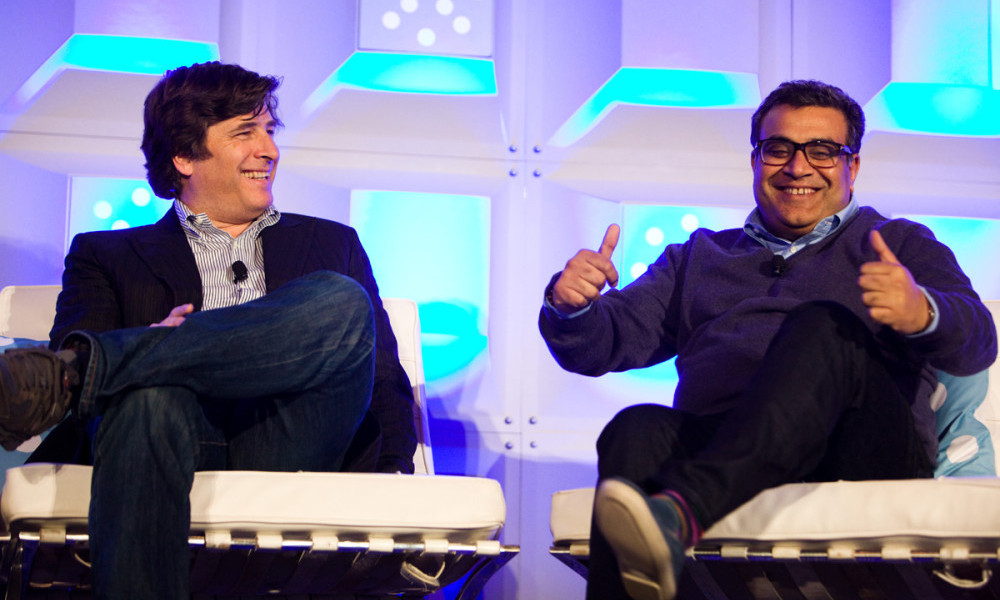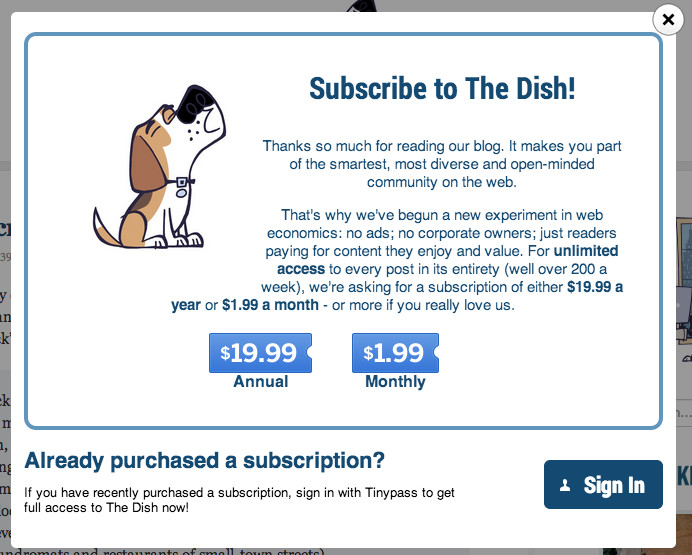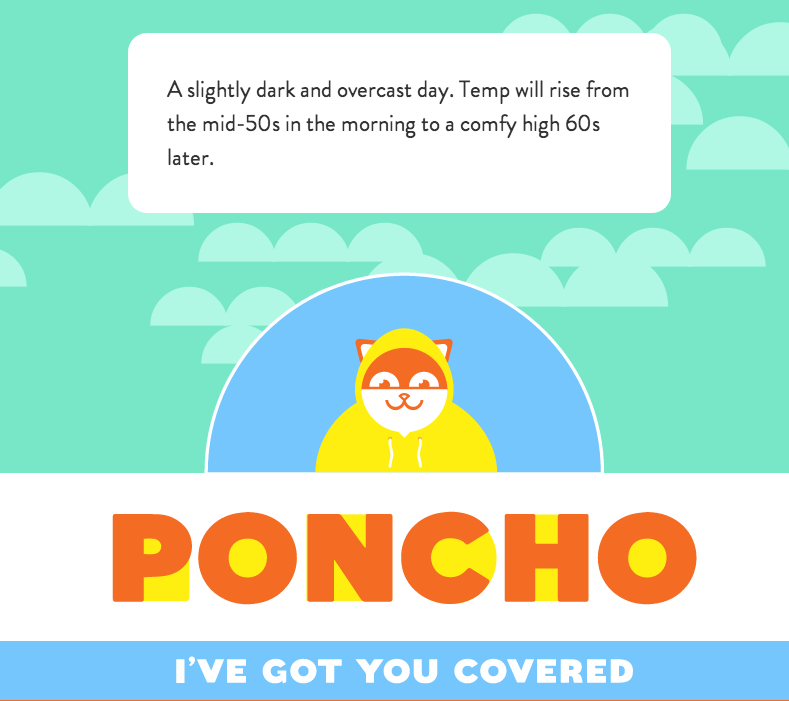
Four Important Ideas from paidContent Live 2013
It may have been a conference about content monetization, but last week's paidContent Live 2013 shone an important light on personalization, risk, innovation, and diversity—things your association should know a thing or two about.
The news industry and the association industry can learn a lot from one another.
This year’s paidContent Live conference, run by GigaOM, was as much a technology conference as one about monetizing content on the internet. It surfaced several key points about news that translate to associations in important ways.
I hopped up to New York last week to take in some of this, and among the points I gathered:
1. Personalization is Growing
When we talk about big data, companies like Zite and Prismatic are our models for making this big data stuff user-friendly.
There were a lot of interesting folks at the conference, including some big names like David Karp of Tumblr and mega-blogger Andrew Sullivan, but the most interesting discussion of the day took place between two of the leading minds behind the personalized news movement—Prismatic cofounder and CTO Aria Haghighi (whose product is shown above) and Zite CEO Mark Johnson. Both center on one thing: The stronger the technology backing your platform, the more you’ll stand out.
Zite's @philosophygeek suggests that some competition is "really pretty RSS feeds" and technology is key differentiator. #pclive
— Ernie Smith is @ernie@writing.exchange (@ShortFormErnie) April 17, 2013
.@aria42's point about hating USA Today but loving their comic book content (and now, reading it) is very telling. #pclive
— Ernie Smith is @ernie@writing.exchange (@ShortFormErnie) April 17, 2013
The ideas these two discussed went deeper than most of the other speakers, touching on cybernetics, filter bubbles, and feedback loops, and with good reason. Both executives suggested that there’s room for personalization to happen beyond content.
This is key, and it’s where associations come in. When we talk about big data, companies like Zite and Prismatic are models for making this big data stuff user-friendly. Associations need to find ways to apply this data creatively to build better products for members. This isn’t easy—Haghighi is a highly educated machine-learning expert—but with the right level of effort, you can stand out.
2. Build Fast; Let the Data Lead You
Perhaps the most interesting CEO voice on the stage was John Borthwick, CEO of BetaWorks. The company, best known for its widely used Bit.ly platform and its relaunch of early social media icon Digg, builds out small ideas quickly, and sometimes, they stick.
The @Betaworks session in summary: Gather lots of data, then give it a voice. #pclive
— Ernie Smith is @ernie@writing.exchange (@ShortFormErnie) April 17, 2013
The company iterates fast. It has five launches in the next five weeks, including the just-released weather app Poncho, shown above—with an approach rooted in data and market research. An example: its recent polling of active Google Reader users as it works to create a replacement tool of its own. Marketing Land’s Matt McGee applauded the move and said “it’s ironic that the best survey of Google Reader users that’s probably ever been done is being done by Digg.”
By building in an iterative way, BetaWorks punches above its weight scale, and if something doesn’t work, it redirects resources quickly. This isn’t dissimilar from the approach that Tiffany Shackelford of the Association of Alternative Newsmedia recently championed. More associations need to consider the benefits of thinking small and building fast.
3. Back Up Your Decisions
When you’re in charge of a company, you’ll often find yourself making decisions that don’t necessarily seem to make sense at the time but have solid reasons behind them. Some examples:
"Most of us have fairly constrained development resources." — @jason_pontin offering up such smart insights #pclive
— Ernie Smith is @ernie@writing.exchange (@ShortFormErnie) April 17, 2013
Jason Pontin, editor-in-chief of MIT Technology Review, came across well with a contrarian take on building mobile websites rather than apps, noting the resource crunch that limits many publishing houses. While not everyone agreed with Pontin (he stood in contrast to developers at Vimeo and ESPN with much stronger development houses, but insisted he wasn’t overtly anti-app), he defended his stance well.
Digg had huge infrastructure costs prior to Betaworks' buy-out. #pclive
— Ernie Smith is @ernie@writing.exchange (@ShortFormErnie) April 17, 2013
John Borthwick, the BetaWorks CEO, noted that its controversial decision to shut down the legacy Digg site and start over had a sound business backing. Essentially, the old Digg had significant infrastructure costs, reportedly $250,000 per month, that limited its profitability. By building something more lightweight and modern (and cutting down costs to $20,000 per month), the company was able to reach similar levels of traffic with a stronger editorial voice than its prior News.me product.
I'd like to argue the other direction: 70 book deals and 3 TV deals isn't that many out of a network of millions. #pclive
— Ernie Smith is @ernie@writing.exchange (@ShortFormErnie) April 17, 2013
More challenging were Tumblr creator David Karp’s views on monetization. He offered few direct answers on monetization strategy beyond the broad, television-style advertising approach the company has taken in recent months. He seemed to suggest, as far as content creators are concerned, that compensation or monetization was not something that the company was responsible for, as dictating such an approach would limit creativity among users. He spoke of the 70 book deals born of the site, an impressive number but a drop in the bucket for a site with tens of millions of active users. He also struggled to answer questions about the abrupt shutdown of the site’s editorial team earlier this month.
(Disclosure: When not writing for Associations Now, I run a Tumblr blog which would be affected by the company’s decisions about monetization.)
The fact is, stakeholders are looking for direction here. And the less of it you offer, the more you’ll come across as opaque rather than transparent. If you’re making big technology decisions, you have to have clear backing for why you’re doing what you’re doing.

4. Stick Your Neck Out
"I don't see what's so cool about having bad products with bad advertising." — @jonsteinberg #pclive
— Ernie Smith is @ernie@writing.exchange (@ShortFormErnie) April 17, 2013
Now that @sullydish is asking for money, everything he does will be on the blog. Including TV. #pclive
— Noah Chestnut (@noahchestnut) April 17, 2013
The key lesson from the conference is that you need to be willing to try new things or you’ll be stuck with bad options. Mega-blogger Andrew Sullivan (the first big-name blogger to try a subscription approach) and BuzzFeed President Jon Steinberg (one of the biggest native advertising proponents) made this point most strikingly. Speaking in different sessions and ultimately at opposite ends of the spectrum as far as how to make money on the internet (this is actually a thing between them, as Sullivan notes on his blog), both defended their models in interesting ways and showed the value of looking beyond the status-quo banner ad model.
Other leaders at the conference, including Aereo CEO Chet Kanojia, also showed a willingness to embrace disruptive trends even if it puts them in the crosshairs. (Aereo is currently embroiled in a lawsuit with the entertainment industry, a major topic of conversation at the National Association of Broadcasters’ annual meeting earlier this month.)
It’s not a simple task to think disruptively, but looking at companies trying to change the status quo and willing to risk a lot to redefine fairly constrained business models is a good place to start. They’re creating models for the next generation.
Don’t be afraid of trying some of these models for yourself. The ideas translate.
BetaWorks CEO John Borthwick with GigaOM founder Om Malik. (photo by Albert Chau for paidContent)








Comments